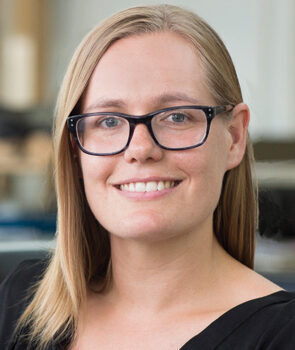
Introduction to Carbon and the Built Environment - 1.0 PDH (LA CES/HSW) / 1.0 GBCI SITES-Specific CE
Recorded On: 02/20/2024
-
Register
- Non-member - $50
- Member - Free!
- Student Member - Free!
- Associate Member - Free!
This session is a global introduction to carbon in the built environment. It is tailored to landscape architects and landscape product vendors and contractors. Nearly 75% of the world’s greenhouse gas emissions come from the urban built environment, and 35% are from outside the buildings. Understanding emissions from construction and operations is critical to reducing the climate impacts of landscape architecture projects.
Landscape architects can use environmental product declarations (EPDs) and life-cycle analysis (LCA) to inform data-driven planning and design. These approaches can reduce climate impacts from built landscapes. Learn how to evaluate both EPDs and LCAs, which are integrated into green building standards, including SITES v2 certification.
Speakers will review:
- Key concepts of the natural carbon cycle
- Common terms and concepts
- Considerations for maximizing the carbon drawdown potential for the living landscape
Underwritten by Landscape Forms
Learning Objectives:
At the end of course participants will be able to:
- Understand the distinction between embodied carbon and operational carbon, as defined in SITES v2 Pilot Credit 3: Assess and Improve Carbon Performance.
- Discover essential practices and resources to reduce carbon-related climate impacts in the built landscape, which may be used to achieve SITES v2 Pilot Credit 3: Assess and Improve Carbon Performance.
- Articulate the differences between biogenic carbon stored in construction materials, dead biomass in nature, and carbon sequestration.
- Understand the life-cycle report stages and what information to look for in an EPD to understand the embodied carbon potential of a product and product class that may be used to achieve credits in SITES v2 Site Design - Materials Selection.
The GBCI course ID for this course is 0920029478, providing SITES-specific CE hours required to maintain SITES AP credentials. Participants will need to pass the exam at the end of the presentation in order to receive a certificate of completion. Participants will need to self-report CE hours through their credentials account on https://sitesonline.usgbc.org.

Christopher R. Hardy, ASLA, PLA, Certified Arborist
Senior Associate
Sasaki
Chris Hardy is a Senior Associate Landscape Architect and Arborist at Sasaki, based in Boston Massachusetts. Chris has been the principal investigator for Sasaki’s landscape Carbon Conscience research team from 2019 to the present. This project includes building both landscape and architectural datasets and translating them into a free and accessible design application, providing carbon metrics for planning and urban design analysis. Before Sasaki, Chris worked at SWA San Francisco and earlier at MNLA in New York City. Outside of practice, Chris participates in the design community through advocacy, teaching, service, and writing.

Pamela Conrad, ASLA, PLA, LEED AP
Founder of Climate Positive Design, Lecturer at Harvard GSD
Climate Positive Design / Harvard Graduate School of Design
Pamela Conrad is an internationally recognized landscape architect and climate advocate. She is a senior fellow with Architecture 2030, and a 2023 Loeb Fellow and Faculty Lecturer at the Harvard Graduate School of Design. She founded Climate Positive Design to enable climate action by providing guidance and an app to support design teams in drawing down carbon while creating environmental, social, cultural, and economic co-benefits. She is a farm girl from Missouri, inspired by the richness and ingenuity of nature.

Stephanie Carlisle
Senior Researcher, Carbon Leadership Forum
University of Pennsylvania - School of Design
Stephanie Carlisle is an architect and ecologist whose work focuses on the interaction between the constructed and natural environment, including life cycle assessment (LCA), urban ecology, environmental justice, and climate policy. She is a research scientist at the Carbon Leadership Forum, where she works to develop open-access embodied carbon and LCA data, tools, and methods to support the building sector in radically decarbonizing construction. Stephanie joined the faculty at the University of Pennsylvania Stuart Weitzman School of Design in 2014. Previously, Stephanie worked for nine years as a Principal and Environmental Researcher at KieranTimberlake Architects in Philadelphia, where she helped lead the office’s research on embodied carbon, material health, landscape ecology, and environmental impacts. Since 2012, she worked on the development team for Tally, a software tool that enables architects and engineers to conduct full-building life cycle assessments during design.

